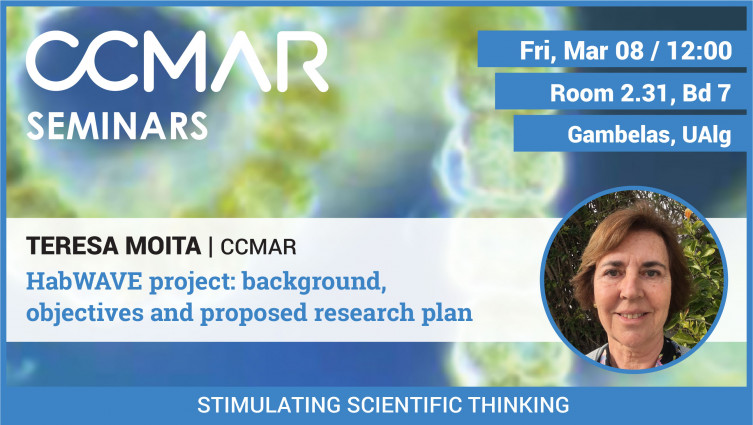HabWAVE project: background, objectives and proposed research plan
Blooms of toxic dinoflagellates are recurrent in Portugal and can be highly variable from decadal to event scales. HabWAVE will investigate conditions leading to bloom initiation, in particular, of species as Gymnodinium catenatum that produce a benthic resting cyst, and willl focus on the main question: can mid-shelf cyst beds seed coastal blooms? An inventory of cyst beds will be done in shelf bottom sediments and the adjacent benthic nephloid layer. Physical processes responsible for bottom particulate matter dynamics will be identified by in situ observations and satellite data.
About our speaker:
Teresa Moita is a retired researcher from IPMA and current researcher at CCMAR. Her work focuses on marine phytoplankton biology, diversity and ecology with emphasis on harmful microalgae species, producers of toxins contaminating shellfish resources. Population dynamics, physical biological interactions in upwelling and other coastal systems.
This seminar was kindly sponsored by:



